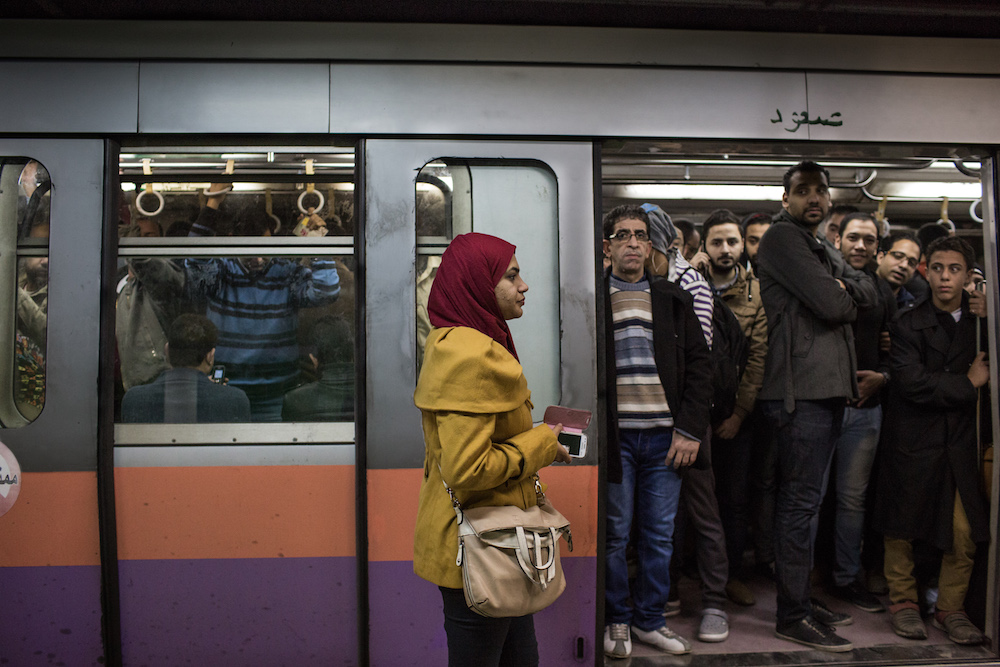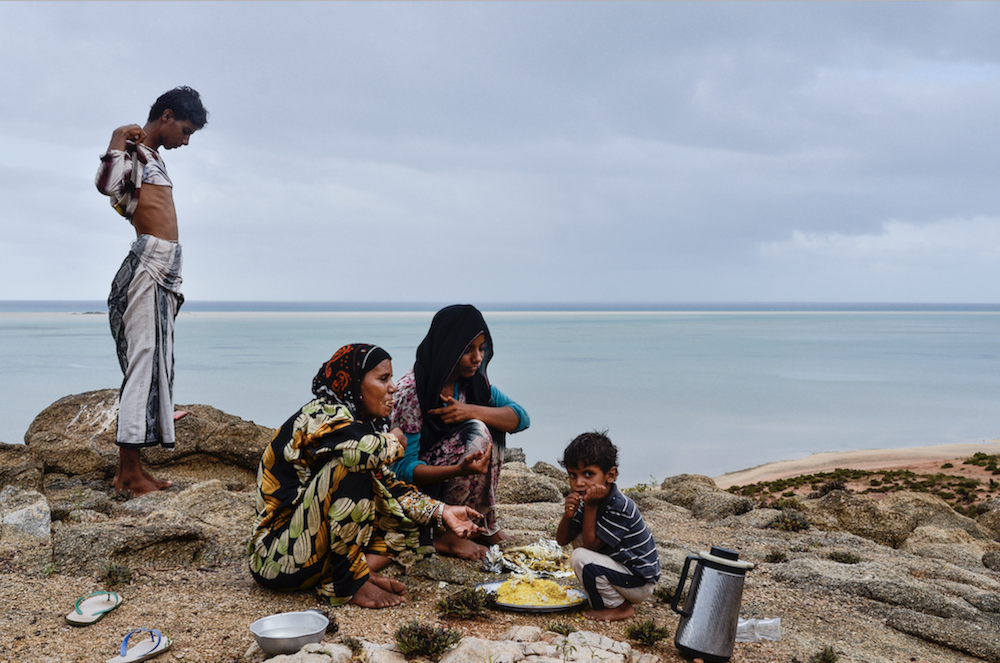“What has journalism done to me?” asks Asmaa al-Ghoul. “In the middle of war, you investigate and you write story after story after story. But you lose your own story in between the explosions.”
These words can be found in Our Women on the Ground, a new collection of essays by Arab sahafiyat (women journalists) telling the stories behind the stories they’ve brought the world. Reporting from the countries they call home—either immediate or ancestral—these women share what it was like to willingly enter the most dangerous conflicts in the Middle East and North Africa in order to bring some humanity and cultural perspective to the wars that afflict the people with whom they share a country and an identity.
In the book, journalists like Shamael Elnoor and Aida Alami describe the need to distance themselves enough from their stories to be able to write them, and the inevitability that the issues they report on will eventually hit too close to home. They explain how their gender was an obstacle at times, an asset at others. They recount putting so much, often their lives, on the line so that Western men’s accounts of the struggles that define their international identities would not stand alone as truth. Through those accounts, you begin to see that the nuances in their stories cannot be ignored, but that the one thread woven through the book’s five sections and 20 essays is the clever resilience it takes to be an Arab sahafiya reporting in and on the Arab world.
We spoke to Zahra Hankir, the editor of Our Women on the Ground about putting together the book she wish existed when she was first stepping out into the world as a sahafiya.
VICE: People have many misconceptions about the oppression of Arab women that are imaginary in ways and real in others, for some of us. What do you think will surprise readers about these stories, and what surprised you about them?
ZAHRA HANKIR: I desperately wanted this book to disrupt the tired stereotype that Arab Women Are Oppressed. But at the same time I did not want to shy away from the reality that in the Arab world, most women do face oppression and acute patriarchy regularly, across all levels of society; data show the region fares worse than most when it comes to women’s rights.
My intention was never to coach or instruct the women to write about this particular subject, as I wanted to give them the space to speak their own truths and amplify their voices. Inevitably, most delved substantially into the misogyny and sexism they’ve experienced as they came of age and then later on the job (a couple did not). These women in particular wrote openly and honestly about what they’ve had to endure—there is no sugar-coating in this book—but most of their attention turns to how they surpassed those challenges.
Arab women reporters do indeed face steep and unique challenges on the job. Many of the book’s contributors, particularly those in more conservative societies and those reporting from war zones, can not freely and comfortably venture out into male-dominated spaces. Some can only move around with a mahram, or a male chaperone who is also a relative, and must cover their hair. Others fought their own families to pursue their journalistic ambitions, and have faced misogyny in public spaces and in the workplace.
At the same time, recognizing that they have certain advantages as women, several turned their attention to women’s issues or areas of coverage that are less focused on the “bang bang” associated with “foreign” or “war reporting.” Amira al-Sharif in particular focuses on women and their resilience in Yemen, at a time of war, famine, and displacement, by entering private homes and spaces after gaining their trust. Having experienced and witnessed sexual harassment herself, Eman Helal embarks on a project that seeks to raise awareness on the subject. Faced with increasingly hostile attitudes from particular groups towards women as Syria descended into a civil war, Zaina Erhaim took her camera into gynecological clinics and other areas that were completely off limits to men. And Shamael El Noor, a Sudanese journalist, is allowed to interview the head of a militia as she is viewed as non-threatening.

You mention the identity "Arab" very specifically in the beginning of the book, explaining that you've used the term not to homogenize Arab sahafiyat, but rather to highlight the multiplicity of our experiences, how wide-ranging they are. Why was that important to you?
Ideally, I’d have included Middle Eastern and North African in the title. There are many strands of identity in the broader Arab world; I hoped to encompass that range in the book. Some of the women prefer to refer to themselves as Middle Eastern, others North African. “Arab” and “Middle Eastern” as standalone terminologies can be construed as problematic. But I didn’t want to be too wedded to those categorization-complications. By choosing to categorize the women as Arab, we were by no means limiting their identity, as you say—in fact, part of the book’s premise is that the area is so layered, it’s impossible to do so.
Arab or Muslim women are often reduced in one way or another to flimsy stereotypes, and that’s partly a function of how they’re depicted in mainstream media. They are regularly thought of as victims, and are often the subject of the Western Gaze. I wanted to disrupt those stereotypes, without turning a blind eye to the realities of the region when it comes to women’s rights. The very unique women in this book operate in unique contexts and have unique feelings about what they’ve witnessed. They respond to the many challenges they face with resilience. Together, they illustrate just how diverse the region is.
As a young journalist, did you have many Arab women journalists to look up to? Were they easy to find?
I grew up in Lebanon, and although the vibrant media landscape in the country is politically polarized and has become more hostile in recent years, journalists there enjoy freedoms many reporters elsewhere in the region do not. As such, journalism is not an uncommon profession for women and most women who decide to embark on a career in the industry don’t face insurmountable obstacles, if at all, when compared to peers in other parts of the Middle East or Arab world.
One of the women who stood out to me as I was a young and aspiring journalist at the American University of Beirut was Roula Khalaf, who incidentally is one of Our Women on the Ground’s contributors. She’s currently deputy editor at the Financial Times but started her career as a foreign correspondent covering conflict in the Middle East and North Africa; her decision to become a journalist was partly rooted in her having grown up during the Lebanese civil war witnessing foreign reporters huddled with machine-gun wielding men at a popular hotel in Beirut’s Hamra neighborhood. I’m so pleased she’s in the book.
Another Lebanese woman journalist whose work I’ve admired for years is the inimitable Nora Boustany, who covered the Lebanese civil war and beyond for the Washington Post and elsewhere, and who was one of the few women at the time to report from the frontlines of the devastating and drawn out conflict. Many women of my generation look to Nora for inspiration, and we continue to learn from her.

Did looking up to these women and wanting others to find them and do the same contribute to wanting to put together the book?
Absolutely, in that it was my admiration of so many Arab women journalists over the years that propelled me to even conceive of the idea for the book. I’d in particular been watching their work closely during the Arab Spring, and felt strongly that the global media narrative on the Middle East and North Africa was, problematically, still being commanded by Westerners and/or males. Journalistically speaking, I found the work these women were doing on the ground—work that was often focused on women and women’s issues—was crucial to our complete understanding of the region. And yet, they were not getting the attention they deserved (while there have been improvements in this area as of late—two Egyptian women were this year awarded the Pulitzer Prize for International Reporting—more needs to be done).
All the essays included are unique and insightful in their own way, but is there a particular story from the collection that struck a chord with you? How so?
I developed a special relationship with the vast majority of the authors, and with each essay. It’s impossible to choose just the one. I will say that I related, quite deeply, to each woman’s account in the Crossfire section—Crossfire being a double entendre for those who have experienced or covered war or its aftermath and who have dual identities. I was born in the UK during Lebanon’s civil war, and spent my early childhood there before my family returned to the country in the early 90s after the conflict subsided.
I was also touched deeply by Nada Bakri’s essay – her courage is astounding, and her writing raw, intimate, and honest. She speaks candidly of the losses she endured during the Arab Spring, culminating in losing her own husband, the late and great Anthony Shadid. Her essay has no resolution. It doesn’t contain a traditional narrative arc. She writes honestly about feeling hopeless, about struggling with trauma, about leaving the industry behind. Her feelings of hopelessness, though unique to her very harrowing circumstances, are echoed by many who feel a profound disappointment when reflecting on the Arab Spring and its aftermath. Her bravery knocked me sideways and I kept coming back to her essay for months.
When choosing the women for this collection, I wanted to include the women of the Arab diaspora because I do feel quite strongly that we are a part of the broader story of the Arab world, looking in particular at conflicts and instability that have, over the decades and even more acutely today, triggered displacement, forced migration or refugee crises. Natacha Yazbeck’s essay quite unconventionally tackles this issue: her writing is something of a reflection of her scattered identity and her being hyper-aware of it. Guilt is a running theme in this book, heightened in the Crossfire section: guilt that we have privileges other women born into conflict and who have had to contend with steeper challenges do not.
Anything else you'd like to add?
I do want to emphasize that the women in this book don’t tell “another” side of the story of the Arab world, they tell many. Without their reporting, the story of the region and its many nuances would be incomplete. And not only because they’re women, but also because they’re local women or women who have strong ties to the Middle East.
We’re a big and expanding network of women doing hard and important work, some of us hoping to disrupt the dated notion of the Western Foreign War Correspondent who parachutes into the area. So often, these foreign correspondents come to the Middle East during times of war, then leave and write memoirs about their experiences there or authoritative accounts of the region. I don’t mean to downplay their work, but rather, to advocate for more diversity in this space. In creating this book, I wanted so desperately (and selfishly) to learn the backstories of these intrepid Arab Women on the Ground to contextualize and celebrate their work. My hope is they’ll all go on to write books or memoirs.
Sign up for our newsletter to get the best of VICE delivered to your inbox daily.
from VICE https://ift.tt/2TeHJjT
via cheap web hosting
No comments:
Post a Comment